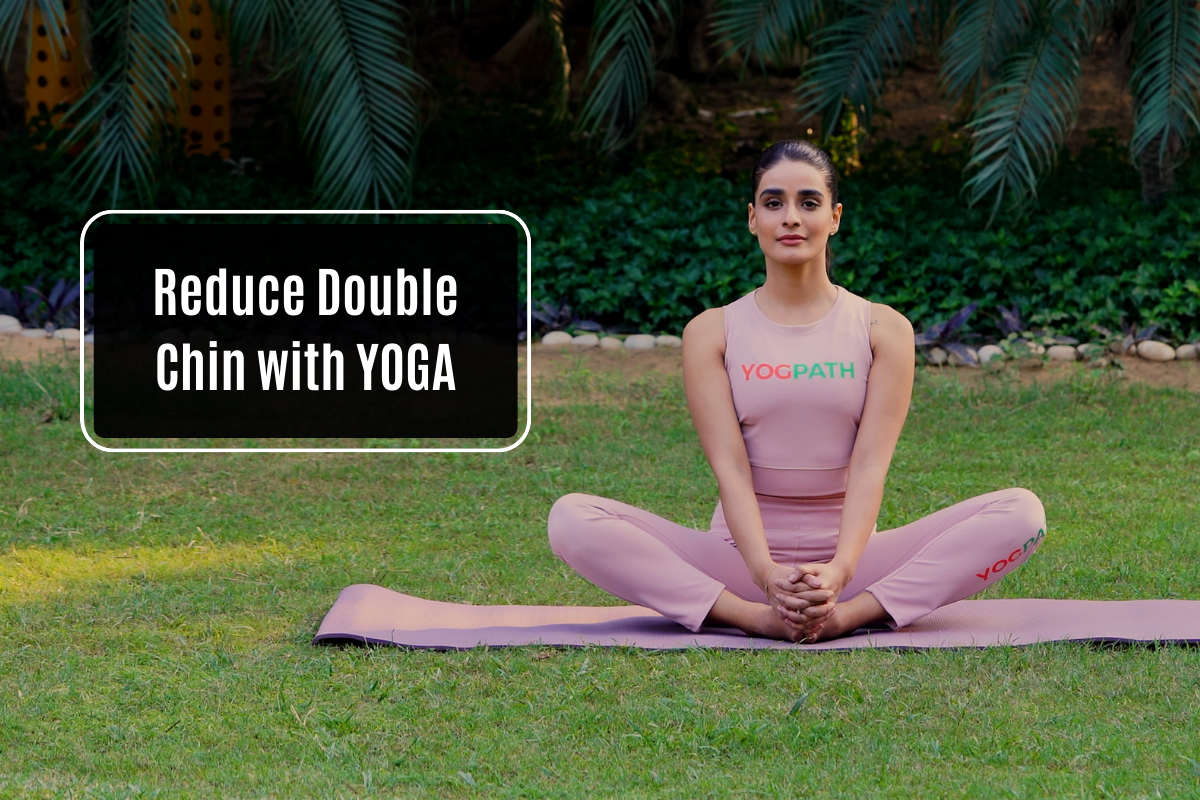
A person is considered to have a double chin when a layer of fat accumulates under the region of the chin. This is also known as submental fat, and when it occurs behind the chin, it creates the illusion of two or more chins. This may be brought on by weight increase, old age, or heredity. The presence of a double chin does not in any way imply that a person is fat; yet, some individuals are self-conscious about it.
If you want to lower your double chin in a healthy manner, practising yoga poses might help you reach your objective. Face yoga for double chin may be performed in the comfort of one’s own home with a high-quality yoga mat. Yoga may enhance blood circulation in the face, develop and tighten facial muscles, and give you the desired chiselled jawline.
Six yoga moves to reshape the jawline
Simha Mudra (Lion Pose) (Lion Pose)
The Simha Mudra increases blood flow to the face and tones the facial muscles.
To do this position,
- Keep your hands on your thigh and maintain an upright posture.
- Then, take a deep breath, protrude your tongue, and attempt to keep your gaze focused on the centre of your eyebrows.
- Create a sound with our mouths that mimics a lion’s roar.
- After practising posture for around 15 seconds, close your eyes and rest.
Chaturanga Dandasana
“Chaturanga” means to employ all four limbs, and “dandasana” means “stick pose,” therefore in this asana, you will balance your complete body on your four limbs in a stick-like position.
To practise Chaturanga Dandasana,
- Lie on the side of your yoga mat towards your stomach.
- Now, inhale and gently raise your hands and knees into a plank posture as you exhale.
- Keep your elbows close to your ribs and gently lean down, as if performing a push-up.
- Maintain the position for 15 seconds, then lie down.
- Repeat this position many times.
Jivha Bandha
“Jivha” means tongue, and “bandha” means to lock, hence in order to complete this yoga asana, we shall extend our tongue. This is diametrically opposed to the Simha mudra.
- Straighten your posture on your mat.
- Inhale, then open your mouth, touch the roof of your mouth with your tongue, and stare at the centre of your nose.
- Tend the position for ten to fifteen seconds, then release the tongue, reopen your mouth, and relax.
Bhujangasana (Cobra pose)
This asana is beneficial for our back and face. It extends the back, improves our posture, and builds muscular strength.
To do the Bhujanasana pose,
- Recline on a yoga mat.
- Then, turn the palms of your hands to face the floor and maintain them ready to elevate your body on both sides. Ensure that your elbows are contacting your ribcage.
- Now, inhale and rise your body gently into a half cobra posture.
- Relax and release the stance, then repeat many times.
Ardha Pincha Maryurasana (Dolphin Pose)
This asana will strengthen your arms, increase your blood circulation, and calm your body.
To do this position,
- Palms and elbows should be placed on the yoga mat.
- Now, inhale and raise your hips in the air while keeping your foot on the ground.
- Keep your head directed toward the ground.
- Normalize your breathing and then relax your position.
Ustrasana (Camel pose)
The camel pose is a great yoga position for stretching and strengthening the neck.
To do this position,
- On your knees, arch your back toward your tailbone.
- Hold your legs just over your ankles and flex your head.
- Take a few breaths and relax the position.
- Repeat many times.
Can double chin yoga assist to contour the jawline?
Yes, however because every body is unique, the effects may take time to manifest. However, if you choose to practise yoga for the jawline, it must be accompanied with adequate rest, a healthy diet, and 3-5 sessions of exercise every week.
Conclusion
Yoga is not only a terrific method to maintain your body’s flexibility and strength, but it may also help you decrease your double chin. If you are still pondering “how to lose double chin,” halt, perform the aforementioned exercises, and compare the results. However, the outcomes may vary depending on body type and genetics.











